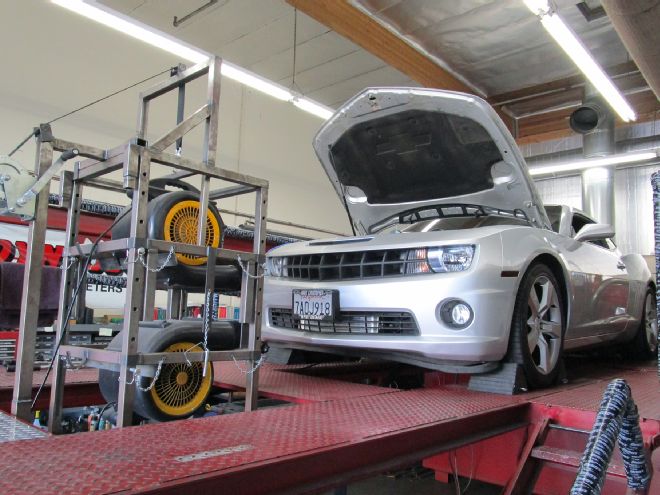
We call it power stacking. It’s where a guy buys a bunch of bolt-on performance parts for his engine, each with its own rated power gain, and then he adds up all those listed gains and expects that as the final number. For example 15 hp from a cold-air kit and 12 from an exhaust should net you an extra 27 hp, right? Well, life just isn’t that simple.
To get a handle on this we hoofed it over to Kenne Bell Superchargers for a chat with founder Jim Bell. As he told us, “At Kenne Bell, we purposely list only the hp gains of our supercharger kits on 100-percent stock vehicles. We won’t use a non-stock vehicle for our supercharger ratings. This is because it’s far too easy, and misleading, to include ‘other’ products (cam, headers, exhaust, X-pipe, throttle body, heads, special high-octane tunes, etc.) that make the supercharger kit look better than it really is. This would come back to haunt us when the customer’s 100-percent stock Camaro came up short on a Dynojet test. Therefore, we never add bolt-on products that would skew or enhance the hp rating of our kits on 100-percent stock vehicles. There are already enough variables in our business.”
According to Bell, the real problem is that people stack the stated gains of their various bolt-on parts and expect that number on the dyno sheet. Bell went on to explain, “If we do add a throttle body or use advanced ignition timing with higher-octane fuel, it is noted so as not to mislead our customers. For example: The hp difference between 24 degrees (ideal spark) and 14 degrees is a whopping 68 hp. So, if a non-supercharged Camaro was tuned for 24 degrees and the supercharger manufacturer’s tune is 14 degrees, his kit will develop proportionately less hp because it can only tolerate 14 degrees instead of the naturally aspirated 24 degrees. By the way, it’s this timing that created the hp for multiple successful tuner companies and manufacturers. Also, every 1 psi of boost will increase power by 10 hp/psi in the 500-600hp level. But 1 psi requires another octane bump of 1.5 to support it. Many of our prospective customers ask ‘How much hp can I expect from an exhaust and cold-air kit (CAK)?’ But the exhaust and CAK make 25 hp with the timing advanced from 18 to 24 degrees. No horsepower by themselves. This is how the customer is duped.
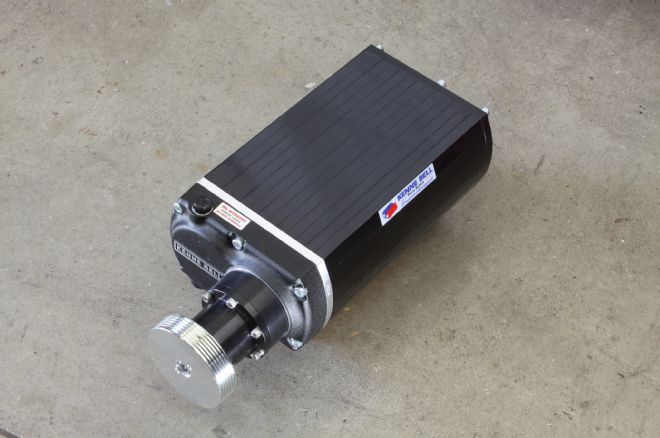
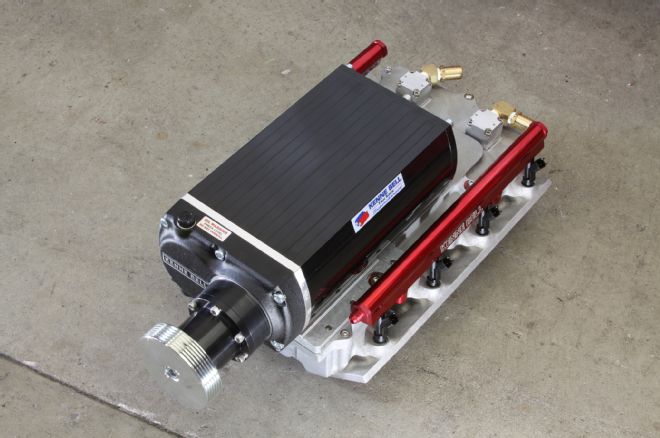
“Exhaust is 25 hp – with a tune (+6 degrees)
“CAK is 25 hp – with a tune (+6 degrees)
“Hi-flow cats are 25 hp – with a tune (+6 degrees)
“That’s 75 hp for the three products, and another 25 hp for the tune, for a total of 100 hp. Right? In reality it’s only another 25 hp from the tune/timing advance. Yep, nothing like the phrase ‘with a tune’ to skew true product performance. Our issue with this is the customer asks ‘Where is the 100 horsepower from my CAK, exhaust, cats, and tune?’ The KB kit made 550 hp (385 stock hp + 165 for the blower) but where’s my other 100 hp?’ Sorry, it was all a myth. Our goal in running these particular tests was to first eliminate the tune, CAK, cat-back, and hi-flow cats, which offer zero horsepower gains on a stock motor and concentrate on the power-adders that offer factual, realistic hp gains with our supercharger kits: cam, headers, 91- to 92-octane, 100-octane unleaded, and E85. And to determine the true potential of the popular supercharger, cam, and header combination with pump, E85, and race unleaded.” The idea would be to test each item, while maintaining the same timing and see how the gains would pan out.
So Kenne Bell teamed up with Manny’s Hardcore Performance in Rancho Cucamonga, California, to put some common parts to the test. The parts would be installed there and then the Camaro would be trailered back to Kenne Bell for dyno testing. The tests would be run at the same timing and A/F ratio for all the products to eliminate any false gains from timing and air/fuel ratio.
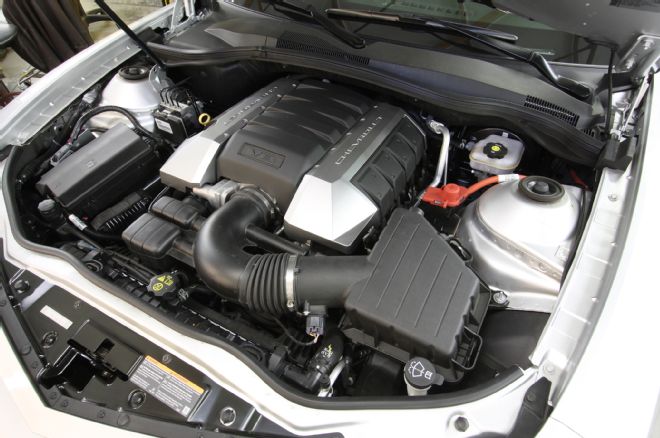 The first test was on a bone-stock Camaro on 91-octane gas. The best pull was 385 hp to the rear wheels.
The first test was on a bone-stock Camaro on 91-octane gas. The best pull was 385 hp to the rear wheels.
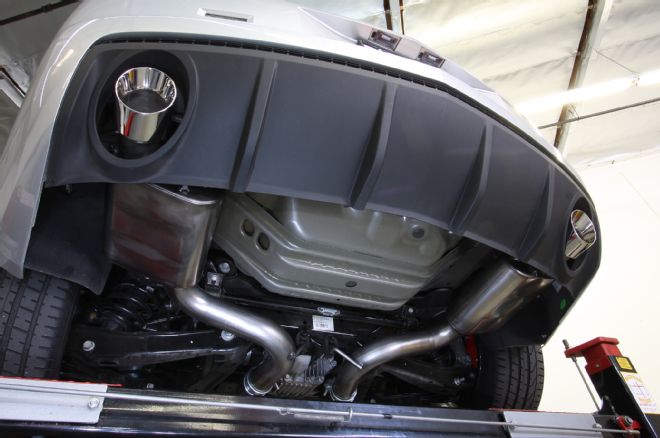 Next up was a cat-back exhaust system that yielded zero horsepower on the stock engine and the same tune. But at least the Camaro sounded a lot better.
Next up was a cat-back exhaust system that yielded zero horsepower on the stock engine and the same tune. But at least the Camaro sounded a lot better.
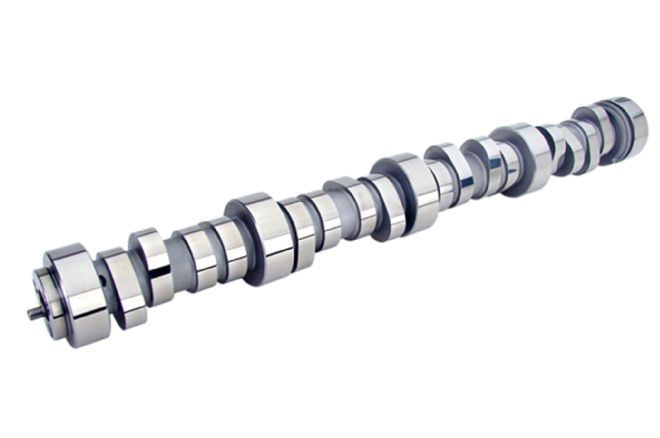 High-flow cats were next in line. After installation, the dyno still registered 385 rwhp, so no gain here. Again, this was without any changes to the car’s tune.
High-flow cats were next in line. After installation, the dyno still registered 385 rwhp, so no gain here. Again, this was without any changes to the car’s tune.
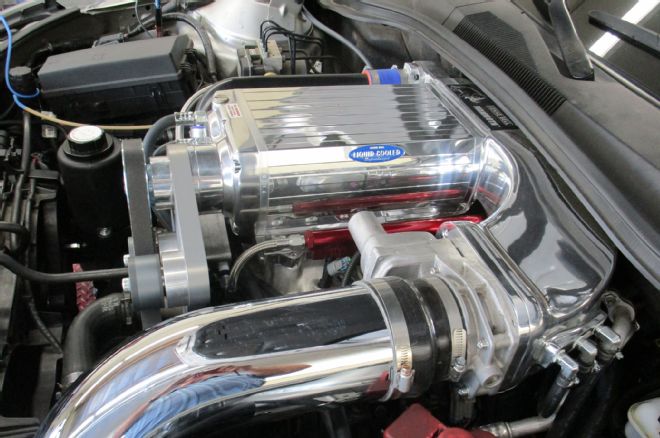 A cold-air kit can help, with a tune. However, without adding any timing the Camaro was still putting down 385 rwhp.
A cold-air kit can help, with a tune. However, without adding any timing the Camaro was still putting down 385 rwhp.
 The first part to add power was a mild COMP camshaft. As Jim relayed, “A more radical cam can add 75 hp but the goal here was a mild cam that would pass emissions and provide great driveability with stock gears.” On the dyno horsepower jumped to 411 rwhp, a gain of 26 ponies.
The first part to add power was a mild COMP camshaft. As Jim relayed, “A more radical cam can add 75 hp but the goal here was a mild cam that would pass emissions and provide great driveability with stock gears.” On the dyno horsepower jumped to 411 rwhp, a gain of 26 ponies.
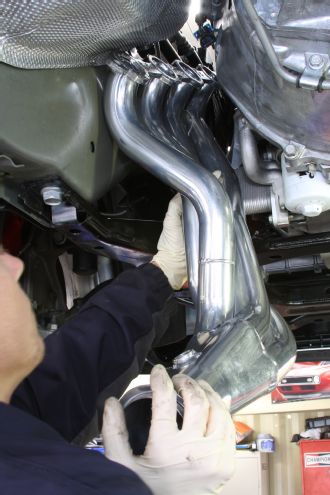 The best gain came from the addition of long-tube headers, which brought the rwhp number up to 451. That’s a gain of 40 hp. If we would have done the cam and header install in reverse order (headers first, then cam) we feel the gains from the cam would have been a touch higher and the header gains a bit lower.
The best gain came from the addition of long-tube headers, which brought the rwhp number up to 451. That’s a gain of 40 hp. If we would have done the cam and header install in reverse order (headers first, then cam) we feel the gains from the cam would have been a touch higher and the header gains a bit lower.
 Next up was 3.2L liquid-cooled Kenne Bell Mammoth blower. This test was run at 15-degrees of timing on 91-octane. At 9 psi we nailed down a best pull of 604 rwhp; which is a gain of 153 horsepower to the rear tires! The new Kenne Bell 3.2L kit incorporates a new big-bore billet case with huge 4x6 lobe rotors instead of 3x5 or 4x4 lobes. It’s 39 percent larger in displacement than a 2.3L TVS and 14 percent larger than their standard 2.8L. Liquid cooling is standard on the 3.2L and optional on the 2.8L. Liquid cooling is highly recommended for boost levels above 15 psi.
Next up was 3.2L liquid-cooled Kenne Bell Mammoth blower. This test was run at 15-degrees of timing on 91-octane. At 9 psi we nailed down a best pull of 604 rwhp; which is a gain of 153 horsepower to the rear tires! The new Kenne Bell 3.2L kit incorporates a new big-bore billet case with huge 4x6 lobe rotors instead of 3x5 or 4x4 lobes. It’s 39 percent larger in displacement than a 2.3L TVS and 14 percent larger than their standard 2.8L. Liquid cooling is standard on the 3.2L and optional on the 2.8L. Liquid cooling is highly recommended for boost levels above 15 psi.
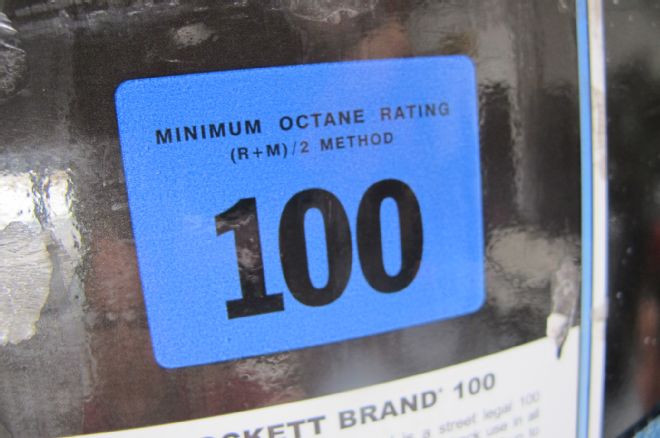 Moving to 93-octane gas we were able to bump the timing to 18 degrees and pick up another 31 rwhp (635 rwhp). This is a great example of how much difference timing can make. Here you can see the dyno pulls so far.
Moving to 93-octane gas we were able to bump the timing to 18 degrees and pick up another 31 rwhp (635 rwhp). This is a great example of how much difference timing can make. Here you can see the dyno pulls so far.
 100-octane gas would let us bump the timing to 24 degrees. As expected, rear-wheel horsepower would jump to 671, a gain of another 35 horsepower. Taking the boost to 18 psi would net 866 rwhp!
100-octane gas would let us bump the timing to 24 degrees. As expected, rear-wheel horsepower would jump to 671, a gain of another 35 horsepower. Taking the boost to 18 psi would net 866 rwhp!
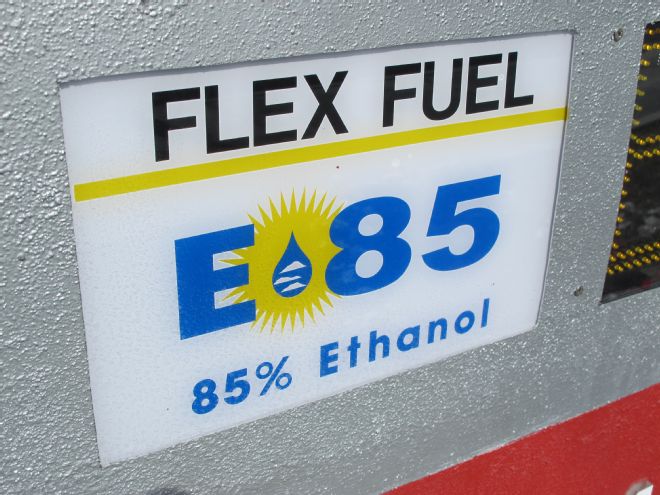 Another question that seems to come frequently is E85. Mostly because of its low cost, but also because of the octane, which can tolerate another 10 psi (100 hp) and yields a 40hp gain from combustion chamber cooking. According to Jim Bell there’s no question about it. A Camaro with a cam, headers, a 3.2L supercharger kit, and E85 will make 900 rwhp (with a 102mm throttle body, which doesn’t help until 700 hp and adds 48 hp at 785 rwhp). So, at 18 psi, E85 makes more power than 100-octane unleaded race gas due to what’s going on in the combustion chamber.
Another question that seems to come frequently is E85. Mostly because of its low cost, but also because of the octane, which can tolerate another 10 psi (100 hp) and yields a 40hp gain from combustion chamber cooking. According to Jim Bell there’s no question about it. A Camaro with a cam, headers, a 3.2L supercharger kit, and E85 will make 900 rwhp (with a 102mm throttle body, which doesn’t help until 700 hp and adds 48 hp at 785 rwhp). So, at 18 psi, E85 makes more power than 100-octane unleaded race gas due to what’s going on in the combustion chamber.